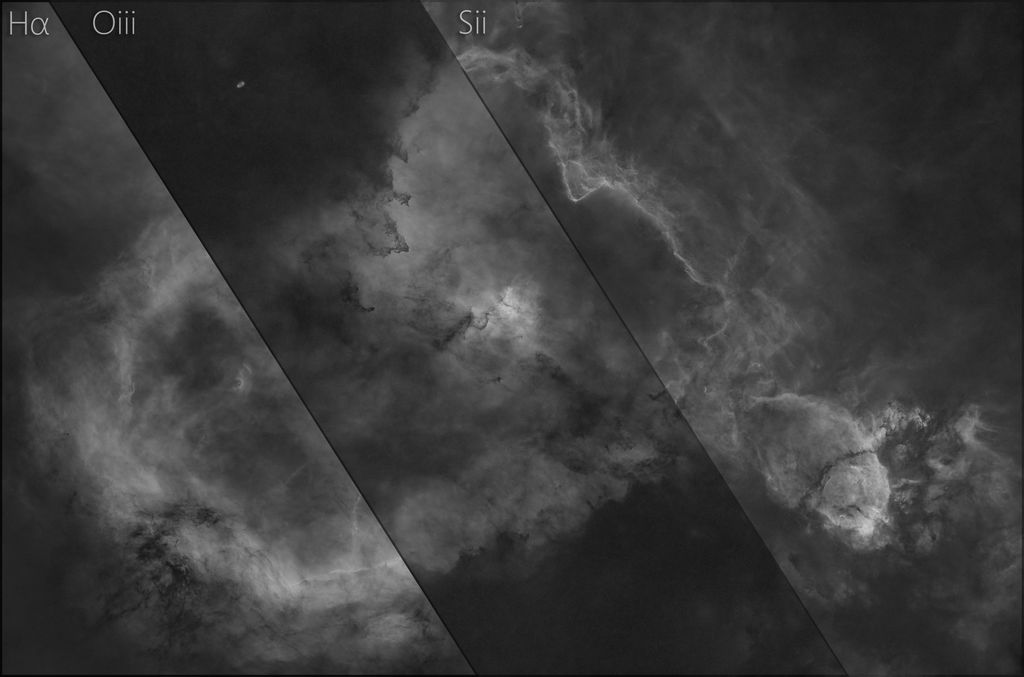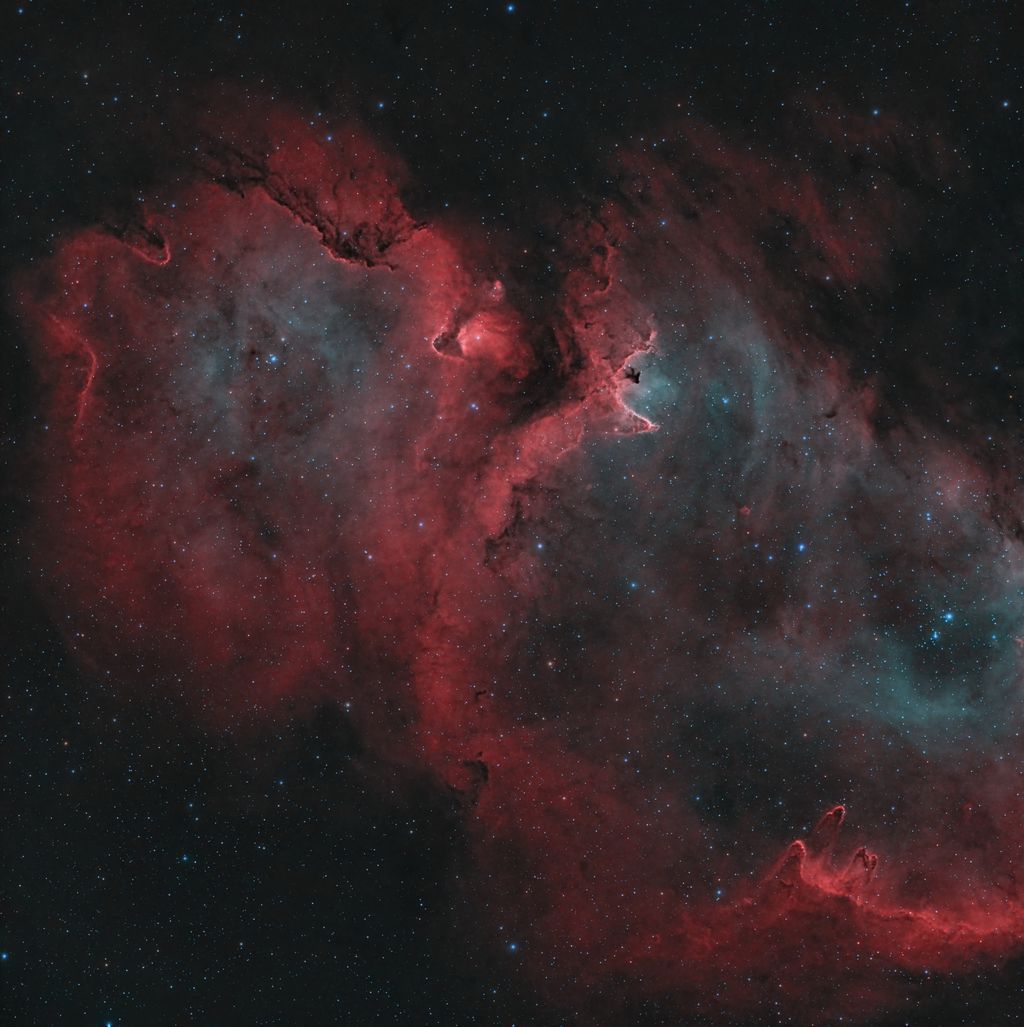After a few short acquisition tests, I finally managed to acquire a substantial data set: 147 frames (@-10 deg) of 300 seconds for a total of about 12 hours of signal. I used a dual-narrowband filter (sv220), bortle 5/6. The frames were calibrated only with a masterdark as I saw no dust halos or vignetting.
I am definitely happy with the signal but feel that by improving in post-processing, I could definitely bring out a nicer result.
What I feel is really missing right now is
- The lack of OIII: with the classic processing, the subject has a definite red predominance and I wish the oxygen could contribute more. Doing HOO processing, however, I realize that the noise is definitely annoying (need more data, possible?) and that it is very easy to make the sky background take on a blue dominance. Any recommendations?
- Some nebular areas turn out to be “sandy”: in some areas of the subject, more than in others, I find more or less fine grain. If it were pure noise I would expect it to be more or less uniform in the image. Am I stretching too much, thus trying to extract more signal than is actually present in the image? Any ideas?
Other things that are not primarily in the thread, however, are:
- I realize that the image is not exaggeratedly sharp, but I think this is due to not too good seeing in my area and the less-than-perfect optics.
- The stars are pretty bad: I know, it is torture to work on them, I can never get a satisfactory result.

Here is my processing:
WBPP (Yes I know, it's not the best)
Linear:
- DynamicCrop
- BlurXterminator (correct-only)
- Graxpert
- SPCC (setting the correct sensor and filters)
- BlurXterminator (complete)
- Denoise: Depending on the type of image I usually try either DeepSNR or NXT. Being forced to drizzle to use DeepSNR, I decided to opt for NXT. I was quite conservative using a denoise value of 0.5.
- Starnet.
Starless:
- GHS About 3 Iberbolic iterations to bring get the desired level of stretch + 1 linear.
- NXT (again, very light)
- Sharpness: I tried both unsharp mask and MLT. I found the result more pleasing with MLT.
- LocalHistogramEqualization: (very light).
- Curves: a light pass for contrast and light for saturation. With a mask I also pushed slightly toward blue only the subject.
Stars:
- NBtoRGBstar combination from SetiAstro
- Curves for luminance and saturation
Combined:
- Created a starmask
- MorphologicalTransformation for star reduction
- DarkStructureEnhance
Any Advice?
Thank you very much everyone!
Clear skies!
F.T.




